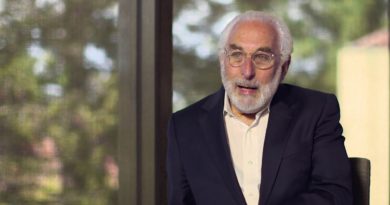A Decision Based on Ignorance of Patent Law That Must Be Overturned
“If the Federal Circuit allows these rulings to stand, it will not only upend patent practice, but it would require the USPTO to do something they are currently not allowed to do, which is limit the filing of continuation applications.”
An interesting tale of intrigue and woe is being written in the decade-long relationship between Google and Sonos. The most recent chapter ended with the district court finding the Sonos patents at issue in their patent litigation against Google were unenforceable due to laches because Sonos had the audacity to file a continuation and seek claims supported by—and actually incorporated from—an earlier filing. According to the district court, because Sonos could have filed those claims in the continuation earlier, that created a laches defense for Google.
Obviously, the district court is wrong. The filing of a continuation cannot legitimately—either legally, practically or rationally—lead to a finding of laches. And for the district court to base such a ruling on the fact that Sonos could have filed the claims earlier shows a complete lack of understanding of basic patent law fundamentals.
Of course Sonos could have filed the claims in the continuation earlier; everyone who files a continuation could have filed the claims they seek in the continuation application earlier! A continuation—by definition—cannot present new matter and must be entirely supported by the earlier priority document. If you couldn’t have made the claims earlier, it wouldn’t be a continuation. So, this ruling is objectively wrong, and there can be no legitimate debate.
And let’s not forget that the kind of limitation on the filing of continuation applications that the district court sees as the appropriate rule is strictly forbidden. The U.S. Patent and Trademark Office (USPTO) continues to be subject to an order preventing the Office from limiting the number of continuations an applicant can file. Even if the USPTO wanted to adopt this ruling, it would have to refuse.
Not a Zero-Sum Game
How can something you have a right to do even after you did it lead to a finding of improper delay that properly supports a finding of laches? In this case, Sonos could have legally filed a continuation under the statute and rules for another eight years after they did. It is simply not appropriate to chastise, vilify or punish someone for doing something they have an absolute right to do during the time frame action was taken.
It seems that the district court did not like the fact that Sonos filed the continuation application in question 13 years after the filing of the original priority document, which was a provisional patent application. But it isn’t like that filing of the continuation creates a new patent term—I sure hope the district court knew at least that much. And, while the filing of the provisional patent application does not start the patent term clock running, the patent term does start for the parent and any continuation filed associated with the parent as of the date the parent application was filed. This means Sonos gave up 12 years of patent term by waiting to file the continuation plus the time it took to obtain the patent from the continuation application. Therefore, by the time Sonos obtained the patents from the continuation application, they had only seven years and eight years of patent term, respectively.
It is not laches to file a continuation during the pendency of a parent application—it is a matter of right. The check on the patent owner is that at no time prior to the filing of the continuation are those claims owned, so there are no exclusive rights. And the diminishing patent term acts as an incentive to file sooner rather than later, but there is nothing evil, underhanded or even mischievous about filing a continuation during the life of the parent. The filing of a continuation during a period of unbroken priority is fundamental to patent practice.
District Court Says ‘Fraud on the Court’
In May 2023, the jury returned a verdict in favor of Sonos for infringement of one of Sonos’s grouping claims and determined that Google did not prove the patent claims to be invalid. After Sonos’ victory, however, the district court pulled the carpet out from under Sonos finding the Sonos patents unenforceable for prosecution laches due to the fact that Sonos could have filed its 2019 claims earlier, and separately holding that the specification amendments made in 2019 were “new matter.” In fact, the district court concluded that Sonos had committed “fraud on the court.”
These separate district court rulings are incongruous. It is not possible for Sonos to have earlier sought the claims (the predicate of the laches ruling) and simultaneously have added new matter in the continuation. If what was amended into the continuation application was new matter, then it would be impossible for Sonos to have earlier made the claim because there wouldn’t have been support. And if there was support for Sonos to have made the claim earlier that would mean the terms were sufficiently supported in the provisional. Simply stated, at least one of these rulings must necessarily be wrong because both cannot be simultaneously true.
Moreover, how could the judge honestly believe there was fraud on the court? It is well-established, black-letter law that “[w]hen a document is incorporated by reference into a host document, such as a patent, the referenced document becomes effectively part of the host document as if it were explicitly contained there.” Telemac Cellular Corp. v. Toop Telecom, Inc., 247 F.3d 1316, 1329 (Fed. Cir. 2001). Fraud warranting a finding of inequitable conduct can’t possibly exist simply because the judge doesn’t understand patent law.
Obviously, it is well established at every level that something disclosed in an earlier filed application that is incorporated into and claimed in a continuation application cannot be new matter—it is as if it were explicitly there all along. What Sonos did is perfectly legal and nothing different than what tens of thousands of applicants have done hundreds of thousands of times—or more. As long as priority remains unbroken, and there is no specific disclaimer, a continuation can be filed at any time during the term of the original priority filing and new claims using different claim language can be both pursued and obtained. See Invitrogen Corp. v. Clontech Labs, Inc., 429 F.3d 1052, 1078 (Fed. Circ. 2005).
The district court rulings on laches and apparent conclusion that it is inappropriate to file a continuation seeking new claims will be overruled—they have to be overruled. If the Federal Circuit allows these rulings to stand, it will not only upend patent practice, but it would require the USPTO to do something they are currently not allowed to do, which is limit the filing of continuation applications. Remember, if you will, that the USPTO still remains under an order preventing the Office from limiting the number of claims and continuation applications that can be filed, relating back to the Office’s failed attempt in 2007 to limit both the number of claims and continuations.
Double Standard
And let’s be honest for a moment; there is extraordinary irony in a patent owner being found to have committed unreasonable, unconscionable and sanctionable delay. Well-funded defendants consciously and intentionally engage in a war of attrition when facing alleged patent infringement and subsequent patent litigation. And this is not intended as a criticism of Google because, frankly, if Google and other well-funded defendants are not engaging in a war of attrition they just aren’t doing their jobs.
The problem is the patent system allows defendants to engage in a war of attrition that drags out for a decade or more. And if the defendant loses, they pay in inflated dollars a decade or more later what would have been a reasonable, negotiated, arm’s length price from a decade earlier. Given the time, cost, and the inevitable reality that many defendants will win and have to pay nothing, there is no downside risk to fighting a war of attrition. This efficient infringement is a feature, not a bug. But it is rather twisted for any delay on the part of the patent owner to be sanctionable while the purposeful strategy of delay by defendants goes by without consequence.
Image Source: Deposit Photos
Author: thaneeh.gmail.com
Image ID: 637848838






